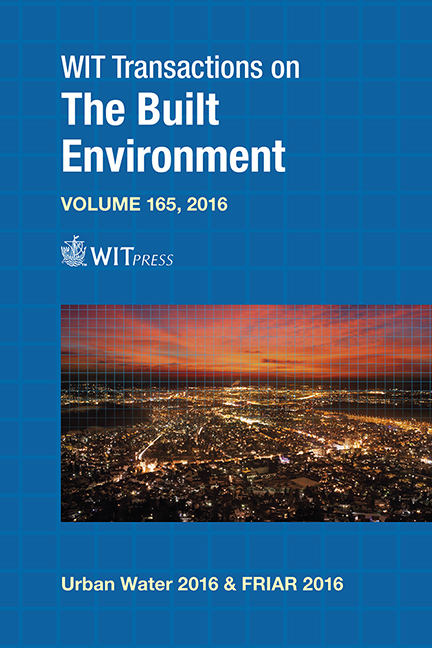Evaluation Of Flood Risks Using Flood Frequency Models: A Case Study Of Luvuvhu River Catchment In Limpopo Province, South Africa
Price
Free (open access)
Transaction
Volume
165
Pages
12
Page Range
215 - 226
Published
2016
Size
1,032 kb
Paper DOI
10.2495/UW160191
Copyright
WIT Press
Author(s)
L. R. Singo, P. M. Kundu, F. I. Mathivha, J. O. Odiyo
Abstract
The Luvuvhu River Catchment has experienced floods of varying magnitudes resulting from heavy rainfall associated with the Intertropical Convergence Zone and cyclones. Human activities in the catchment have aggravated risks of flooding. Risks of flooding have been experienced in the past, with the major ones occurring during sporadic rainfall events. This study aims to evaluate flood risks through rainfall distribution characteristics in the catchment using flood frequency models. Statistical analyses that include Gumbel and Log-Pearson Type III distributions were selected to perform flood frequency analysis. Peak flood magnitudes for the 2, 5, 10, 25, 50, 100 and 200-year recurrence intervals were estimated using the two distributions. In peri-urban areas such as the Luvuvhu River Catchment, design life of structures for low risks (10-year return periods) and medium risks (50-year return periods) catchments are important to manage risks. The results showed a general increase in the frequency of extreme events, accompanied by floods of higher magnitude. Design life of structures for low risks and medium risks catchments showed magnitudes in the range of 453.03 mm to 1495.48 mm for Log-Pearson Type III and 454.39 mm to 1370.16 mm for Gumbel’s. The detected amounts could be taken as the estimated limiting values for flood design purposes in the catchment.
Keywords
catchment, design life, flood frequency models, flood magnitudes, flood risk, Intertropical Convergence Zone





